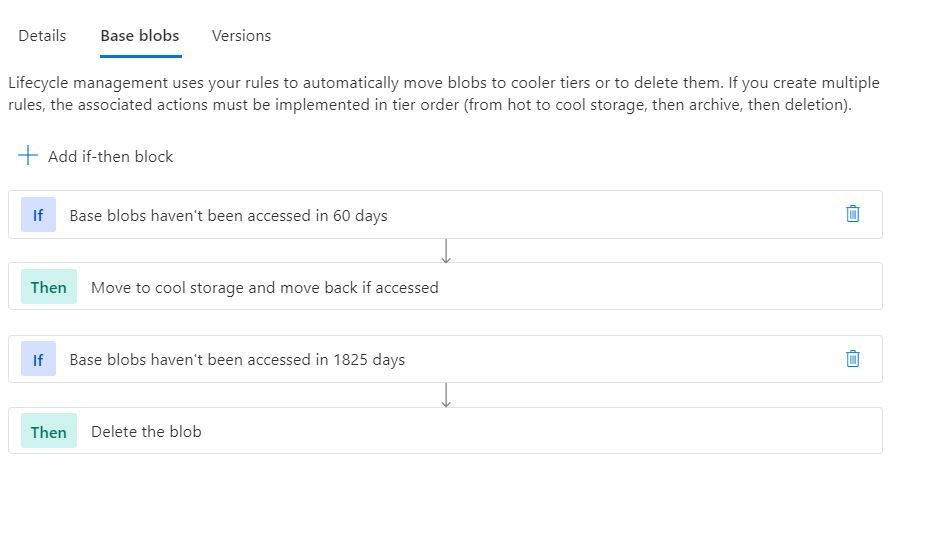@Anonymous
You can have both individual blob and storage level lifecycle policies, whatever works best for your use-case. If multiple policies apply to a blob both will be run. In your example the 40 day policy would move the blob since it has the shorter time.
In the screenshot example you provided the blob will be moved to cold storage after 60 days and then will be deleted after 1825 days if not accessed. When creating multiple rules in a policy, the associated actions must be implemented in tier order (from hot to cool storage, then archive, then deletion).
Hope this helps. Let me know if you have further questions or issues.
-------------------------------
Please don’t forget to "Accept the answer" and “up-vote” wherever the information provided helps you, this can be beneficial to other community members.
